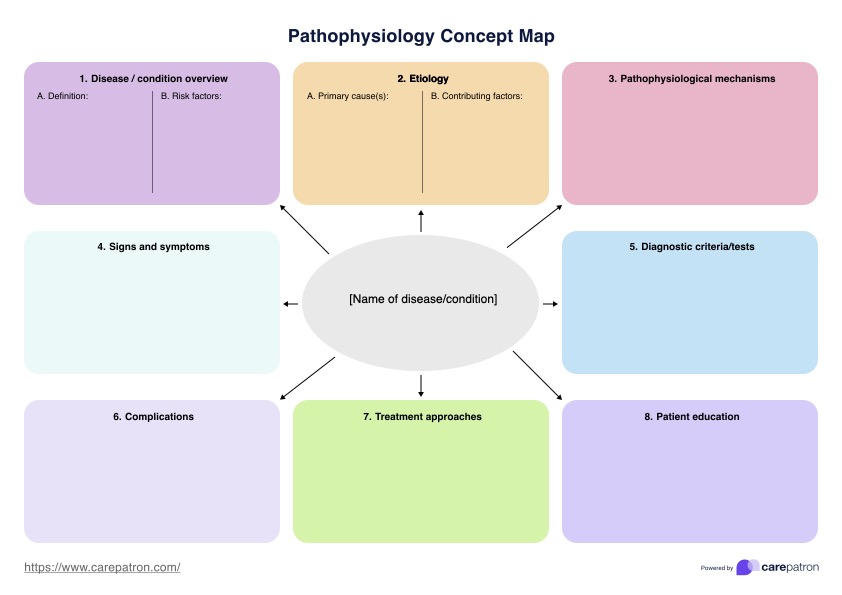Pathophysiology is the study of how disease affects normal body function, focusing on the functional changes that result from or are associated with disease or injury. The core concepts involve understanding the etiology (the cause of the disease), the pathogenesis (the mechanism of disease development), the resulting morphological changes (structural alterations in tissues or organs), and the subsequent clinical manifestations (signs and symptoms) that occur as compensatory mechanisms are activated and, if insufficient, begin to fail.

Pathophysiology Concept Map
Effortlessly understand pathophysiology through our concise and user-friendly Pathophysiology Concept Map.
Pathophysiology Concept Map Template
Commonly asked questions
The four essential components used to describe and understand a disease process in pathophysiology are: etiology, pathogenesis, morphological changes, and clinical manifestations. Etiology identifies the cause. Pathogenesis describes the sequence of cellular and molecular events that occur from the initial cause to the final expression of the disease. Morphological changes are the gross and microscopic structural alterations characteristic of the disease. Finally, clinical manifestations are the signs and symptoms that indicate the presence of the disease.
Describing the steps in pathophysiology generally follows the sequence of disease development, which begins with the etiological trigger, where the causative agent (e.g., bacteria, trauma, genetic mutation) is introduced. This initiates pathogenesis. Next are the morphological and functional changes. The final step is the emergence of clinical manifestations, where the structural and functional issues become evident as measurable signs and reported symptoms, leading to diagnosis and treatment.
EHR and practice management software
Get started for free
*No credit card required
Free
$0/usd
Unlimited clients
Telehealth
1GB of storage
Client portal text
Automated billing and online payments











